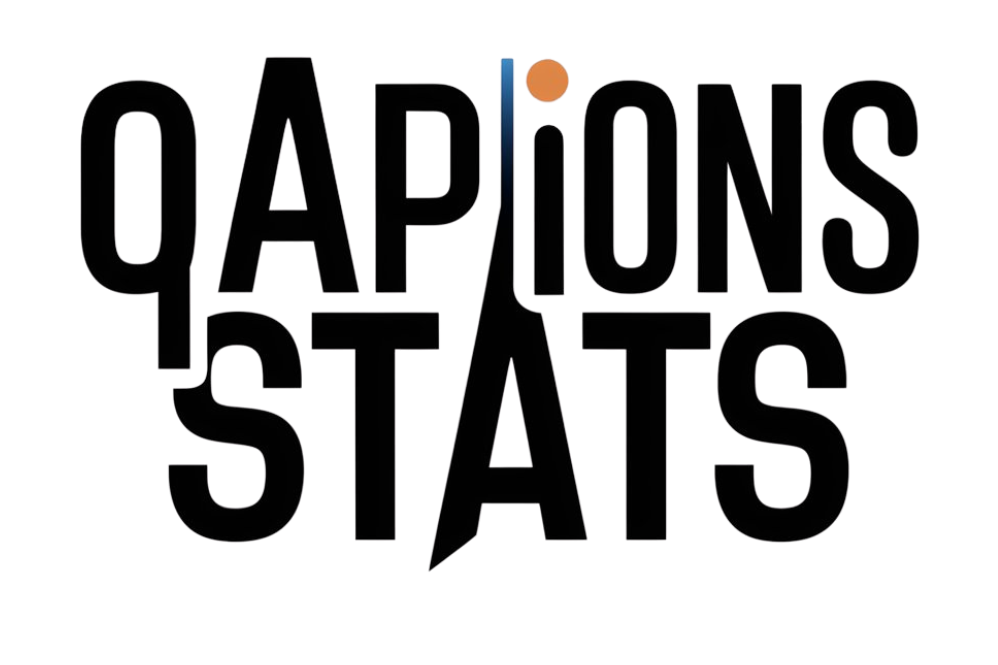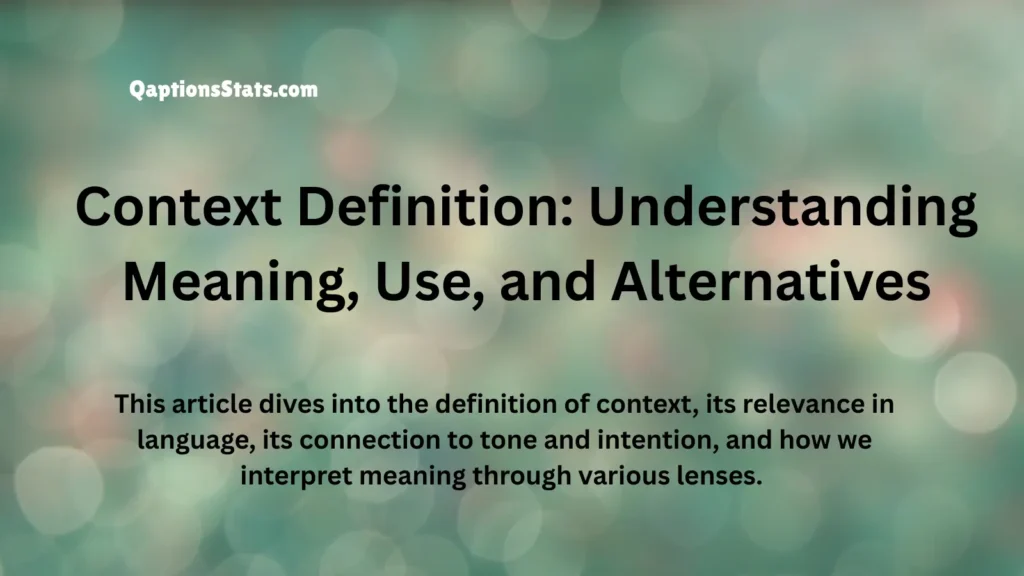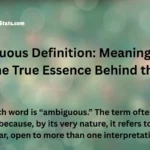In everyday language, we often come across the word “context.” Whether we’re reading a novel, listening to a speech, writing a message, or decoding someone’s emotions, understanding the meaning of “context” is essential. But what does context really stand for in different situations? Why is it such an important concept in communication, literature, digital writing, and even life?
This article dives into the definition of context, its relevance in language, its connection to tone and intention, and how we interpret meaning through various lenses. We’ll also explore the meaning of “hiatus” in the context definition, explain how to use and understand context in text, and offer 11 real-world examples that show how context transforms meaning. By the end, you’ll be equipped with a richer understanding of language, tone, and expression.
What is the Definition of Context?
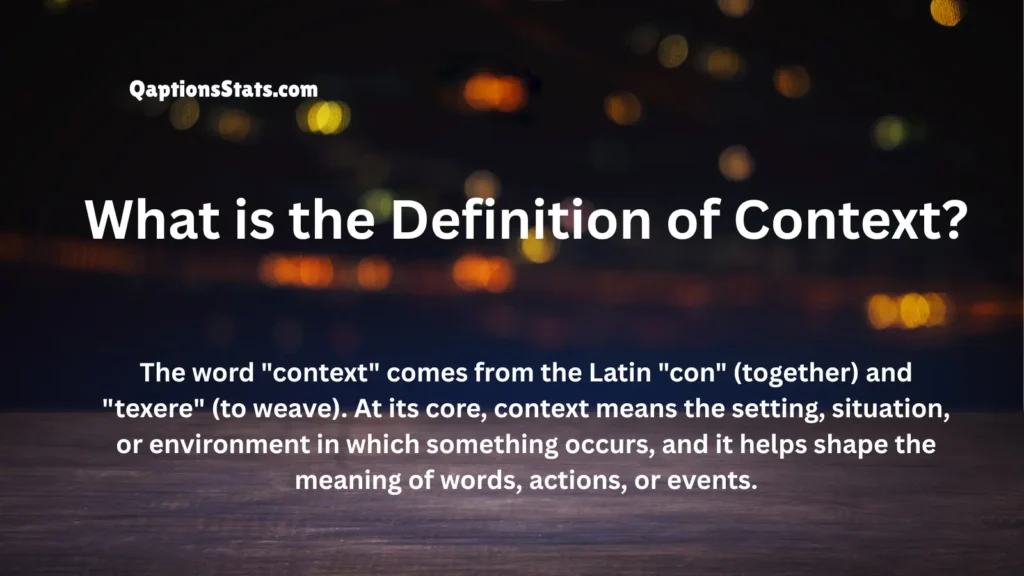
The word “context” comes from the Latin “con” (together) and “texere” (to weave). At its core, context means the setting, situation, or environment in which something occurs, and it helps shape the meaning of words, actions, or events.
In simpler terms, context is what surrounds a word, phrase, action, or situation that gives it meaning. Without context, most communication loses clarity and may even be misunderstood.
For example:
- The word “cold” can mean chilly weather, a sickness, or a person being emotionally distant.
- Only the surrounding words or situation tell us which meaning applies.
See Also: HY Meaning: What It Stands For, How It’s Used & Alternatives to “Hiatus”
What Does Context Stand For in Text?
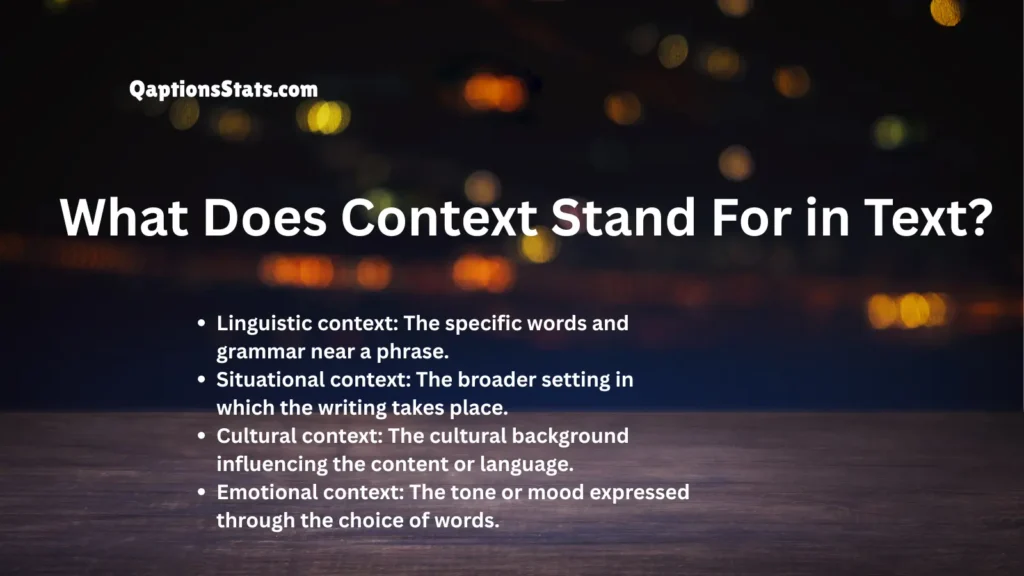
In writing, context refers to the sentences, ideas, and tone around a particular word or passage that help readers understand its intended meaning. Writers use context clues to guide readers—these could be definitions, examples, contrasts, or explanations provided nearby.
There are several types of context in writing:
- Linguistic context: The specific words and grammar near a phrase.
- Situational context: The broader setting in which the writing takes place.
- Cultural context: The cultural background influencing the content or language.
- Emotional context: The tone or mood expressed through the choice of words.
When reading, understanding the context is crucial because it helps prevent misinterpretation. This is especially true in poetry, literature, news headlines, and social media where words can carry multiple meanings.
See Also: Ambiguous Definition: Meaning, Usage, and the True Essence Behind the Term
Hiatus Meaning in Context Definition
Now, let’s address the term “hiatus” in the context of definition and communication.
Hiatus typically means a break, pause, or gap in a sequence, activity, or time. But when used in contextual definitions, it often indicates a temporary stop in communication, production, or presence.
For example:
- “The show is on hiatus” means it’s taking a break and will return.
- “After a long hiatus, she resumed writing,” indicates a return after a pause.
So, when we say “hiatus meaning in context definition,” we’re exploring how the meaning of “hiatus” can change or become clearer when placed in a sentence, message, or situation.
Why Context Matters in Communication
Context influences the way we understand tone, emotion, and intention. One word, phrase, or gesture can have multiple meanings depending on where, how, and why it’s used.
Consider this sentence:
- “That’s just great.”
Depending on the tone and situation, this could mean: - Genuine happiness
- Sarcasm
- Frustration
- Relief
Only context tells us which feeling is being expressed.
How Tone and Context Work Together
Tone refers to the emotional quality or attitude behind words. Context supports tone by adding depth, clarity, and setting. Together, they ensure the speaker’s or writer’s message is received as intended.
For instance:
- In a formal work email:
“I hope this message finds you well” expresses professionalism and polite intent. - In a casual text:
“Hey! Long time, no talk!” expresses friendly warmth.
The same phrase can carry multiple meanings. That’s why both tone and context must work in harmony for effective communication.
11 Real-Life Examples of Context Changing Meaning
Here are 11 powerful examples that show how context shapes meaning, expression, and tone:
1. “Thanks a lot.”
- In a sincere setting: Expresses true gratitude.
- In a sarcastic context: Implies frustration or blame.
2. “I’m fine.”
- In a neutral context: Suggests things are okay.
- In an emotional context: May hide sadness or anger.
3. “Let’s talk.”
- At work: Could mean a meeting or feedback.
- In a relationship: Might hint at serious conversation.
4. “We need to take a break.”
- Business context: Could refer to a short pause in meetings.
- Romantic context: Often signals a breakup or emotional space.
5. “You’re unbelievable.”
- Celebratory context: Means someone did something amazing.
- Critical tone: Suggests disappointment or shock.
6. “Interesting…”
- Neutral tone: Indicates genuine curiosity.
- Skeptical context: Could hide doubt or disapproval.
7. “Sure.”
- Casual setting: Suggests agreement.
- Irritated mood: Can sound dismissive.
8. “Okay.”
- Professional use: Shows acknowledgment.
- Conflict: Might mean the person is not actually okay.
9. “Whatever you say.”
- Cooperative tone: Shows agreement.
- Defensive tone: Reflects resistance or resentment.
10. “It’s fine.”
- Sincere voice: Means no problem.
- Passive-aggressive voice: Hides displeasure.
11. “I’ll think about it.”
- Thoughtful tone: Shows open-mindedness.
- Dismissive tone: Suggests refusal without saying “no.”
Each of these phrases changes meaning with context, reminding us how vital the surrounding situation, mood, and tone are.
Polite, Professional, and Casual Alternatives to Hiatus
If you’re writing or speaking and want to use a softer, clearer, or more suitable alternative to “hiatus,” depending on your context and audience, here are some suggestions:
Polite Alternatives
- “Temporary break”
- “Short pause”
- “Brief intermission”
These sound gentle and respectful, often used in formal writing, emails, and announcements.
Professional Alternatives
- “Scheduled downtime”
- “Operational pause”
- “Planned interruption”
These are more structured and fit best in corporate, academic, or technical communications.
Casual Alternatives
- “Taking a breather”
- “On a break”
- “Just stepping away for a bit”
These are relaxed and informal, suitable for personal conversations or social media.
Choosing the right version depends on:
- Who your audience is
- The seriousness of the pause
- Whether you plan to return or not
The Role of Context in Social Media and Texting
In fast-paced, text-based communication like WhatsApp, Instagram, or X (formerly Twitter), the risk of misunderstanding is high. Emojis, punctuation, and timing become part of the context.
Example:
- A simple “Sure.” with a period might feel cold.
- But “Sure! 😊” feels friendly and enthusiastic.
Understanding context in online messaging helps avoid miscommunication, conflicts, or mixed signals. It ensures tone and intent come through clearly even when voice and body language are missing.
When Context is Missing: Why Miscommunication Happens
Many arguments or confusions arise because the context is not clear. This happens when:
- A message is too short
- The emotional state isn’t expressed
- Cultural or linguistic differences exist
- Background information is assumed but not given
To avoid this:
- Always add clarification when needed
- Use tone indicators in writing
- Don’t assume your meaning is obvious
Conclusion: Why Understanding Context Makes You a Better Communicator
To master communication—whether it’s in writing, speech, or conversation—you must master context. It acts like a bridge between what is said and what is meant.
Whether interpreting the meaning of “hiatus”, choosing the right expression, or reading between the lines, context gives you the power to be more thoughtful, respectful, and effective.
In any setting—professional, personal, or casual—understanding and using context wisely leads to clearer, more meaningful interactions.
FAQs About Context and Hiatus
What is context in simple words?
Context is the situation or background that helps us understand the meaning of something.
What does hiatus mean in conversation?
It means a pause or break from an activity, often temporary.
How does context affect meaning?
Context shapes how we interpret words by adding setting, tone, and intention.
Can the same word have different meanings in different contexts?
Yes, depending on tone and situation, one word can carry multiple meanings.
Is hiatus a formal word?
Yes, it’s often used in professional or official language, but can be softened.
What are casual alternatives to hiatus?
Phrases like “taking a breather” or “on a break” are more relaxed versions.
Why is context important in texting?
Text lacks tone and body language, so context helps avoid confusion and misreading.
